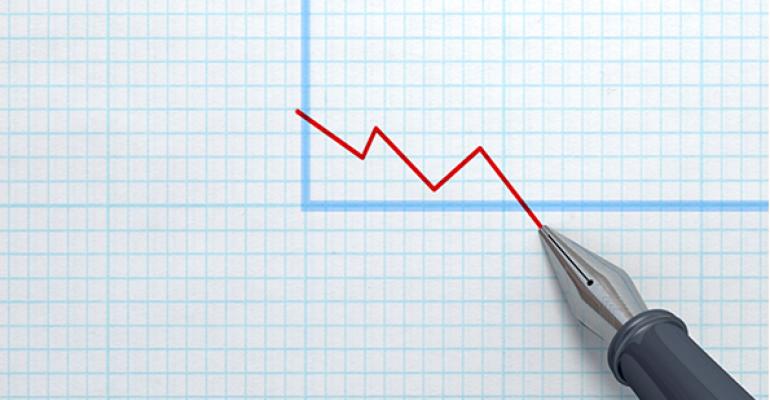Same-store sales grew just 0.7 percent in April, according to the latest MillerPulse survey, the slowest rate of growth for the restaurant industry in more than two years.
Same-store sales slowed to 3.9 percent on a two-year basis, factoring out one-time events that impact sales, such as weather, the weakest two-year rate in 18 months.
The results, combined with disappointing numbers from March, suggest a broad slowdown in industry same-store sales. Same-store sales increased a meager 1.1 percent in March.
[CHARTBEAT:3]
“April should have been better,” said Larry Miller, co-founder of the survey. “If you look at the two months together, it’s pretty clear that the business is slowing at this point.”
The numbers confirm comments from several executives in recent earnings calls referring to a “skittish” consumer or general economic weakness that seems to be keeping people from restaurants.
April’s weakness was all traffic related. Industry same-store traffic fell 1.2 percent in the month, continuing a pattern of generally weak traffic all year. Industry traffic has fallen in three of the four months of 2016 — with only February, which was aided by Leap Day, providing positive traffic.
Quick-service traffic rose 0.3 percent. Casual dining traffic, however, fell 2.3 percent.
But casual dining got consumers to spend more money. Same-store sales at casual-dining concepts rose 0.8 percent, while quick-service same-store sales rose 0.6 percent.
“It’s slowing everywhere,” Miller said.
The narrow gap between quick-service same-store sales and traffic numbers reflects the segment’s recent reliance on discounts to get customers in the door. Still, “the value doesn’t seem to be drawing quite the same number of guests it did the first couple of months of the year,” Miller said.
One bright spot, he said, was polished-casual dining, suggesting a “bifurcation” in consumer spending, as higher-end eateries perform more strongly than those catering to lower- and middle-class consumers.
The reason for the sudden slowdown in sales is less certain. Much about the economy suggests that consumers are spending. Retail sales rose 3 percent in April. Gas prices remain low compared with a year ago. Unemployment is around 5 percent, and wages are growing.
And weather didn’t appear strong enough in April to be much of a factor.
“I don’t see a catalyst,” Miller said. “You could make a pretty strong case for things getting better. There’s strong job growth. Incomes are starting to grow. Confidence is really high.”
Competition might be one major factor. Grocers and convenience stores continue to lure traffic with prepared foods.
Prices could also be keeping more people home. Commodity costs have eased, and grocers have kept prices low. Prices for food at home fell 0.5 percent in March and increased 0.1 percent in April, according to federal data.
By contrast, food away from home prices increased 0.2 percent each month. Food-at-home prices have fallen four of the past seven months, while restaurants have increased prices each of the past seven months.
There might simply be too many restaurants. The industry has added a healthy dose of employees over the past year, suggesting rapid expansion. By increasing the number of restaurants, the customer base for those restaurants might be spreading out, and moving to independents and small concepts not captured by indices such as MillerPulse.
“There’s more unit growth that might explain a lot of issues restaurants are having with traffic,” Miller said. “Or they’re shifting from things we track to things we don’t.”
Contact Jonathan Maze at [email protected]
Follow him on Twitter: @jonathanmaze





